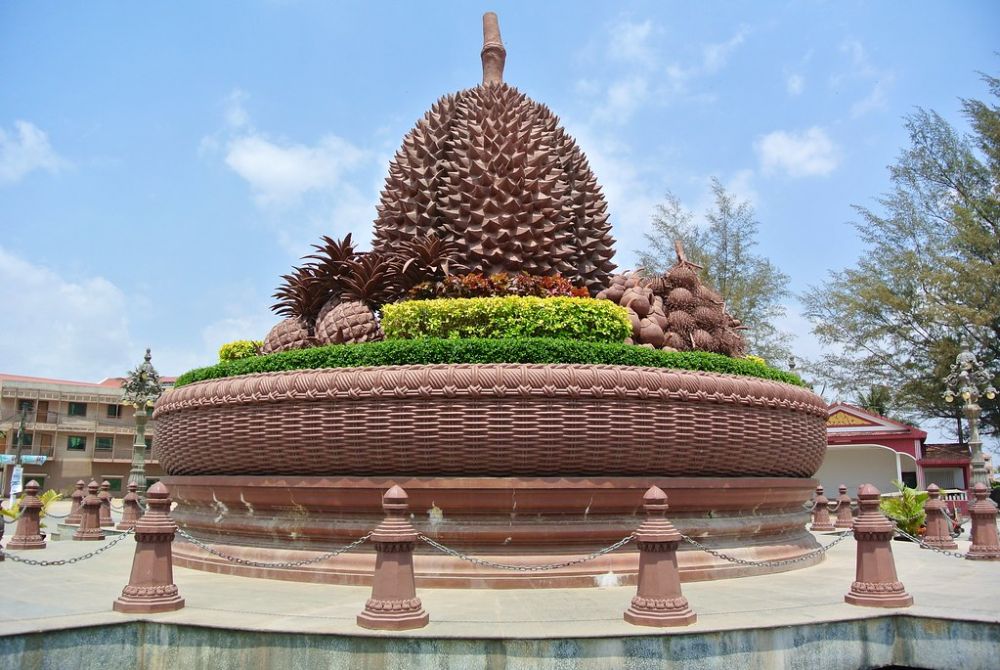

The quaint, serene town of Kampot in Southern Cambodia has long been cherished for its colonial architecture, tranquil river, and the surrounding lush countryside. Tourism in Kampot began to blossom in the early 2000s as intrepid travelers started to venture beyond the well-trodden paths of Angkor Wat and Phnom Penh. Seeking a more authentic experience, they found Kampot, with its laid-back atmosphere and natural attractions such as Bokor Hill Station and the verdant pepper farms.
With its increasing popularity, the town has gradually developed its infrastructure, with a variety of accommodations, restaurants, and tours to cater to both backpackers and those looking for a more luxurious stay. Tourism in Kampot revolves around its natural beauty and cultural heritage, offering a well-rounded experience for visitors.
At the heart of Kampot lies the iconic Durian Roundabout, a testament to the region's identity and a curiously endearing landmark for both locals and tourists alike. This unique roundabout features a giant durian sculpture, paying homage to the province's status as a leading producer of this distinctively pungent and savory fruit, which is beloved in Southeast Asia.
While initially a symbol of local pride and economy, the Durian Roundabout has also inadvertently become a focal point for tourists. It is not only a spot for a quirky photo opportunity but also serves as a navigational landmark for those exploring the town and its surroundings.
Kampot has seen various tourism trends over the years, often influenced by the changing demographics of visitors and the global travel industry. Recently, there has been a surge in eco-tourism and sustainable travel practices. Tourists are now increasingly seeking out eco-friendly accommodations and tours that offer insights into local conservation efforts, which aligns with Kampot's promotion of its natural assets.
The town has also become a hub for culinary tourism, with cooking classes and food tours that highlight traditional Khmer cuisine and locally-sourced ingredients, including the famous Kampot pepper. This has given tourists a hands-on experience of Cambodian culture and supports the local economy.
Additionally, the rise of digital nomadism has seen Kampot gain popularity as a destination for remote workers. The town offers a perfect blend of a relaxing lifestyle, affordable living costs, and sufficient facilities, including internet cafes and co-working spaces.
Despite these new trends, the timeless charm of Kampot's riverfront, the remnants of French colonial buildings, and the proximity to natural wonders like the Prek Kampot and Bokor National Park, remain the evergreen draws for visitors.
The Durian Roundabout stands as a quirky emblem in the delightful town of Kampot, which has gracefully transitioned from a sleepy riverside town to a must-visit destination on the Cambodia tourism map. Whether it serves as a meeting point, a photo backdrop, or just a peculiar memory, the roundabout remains an integral piece of Kampot's evolving tourism tapestry.